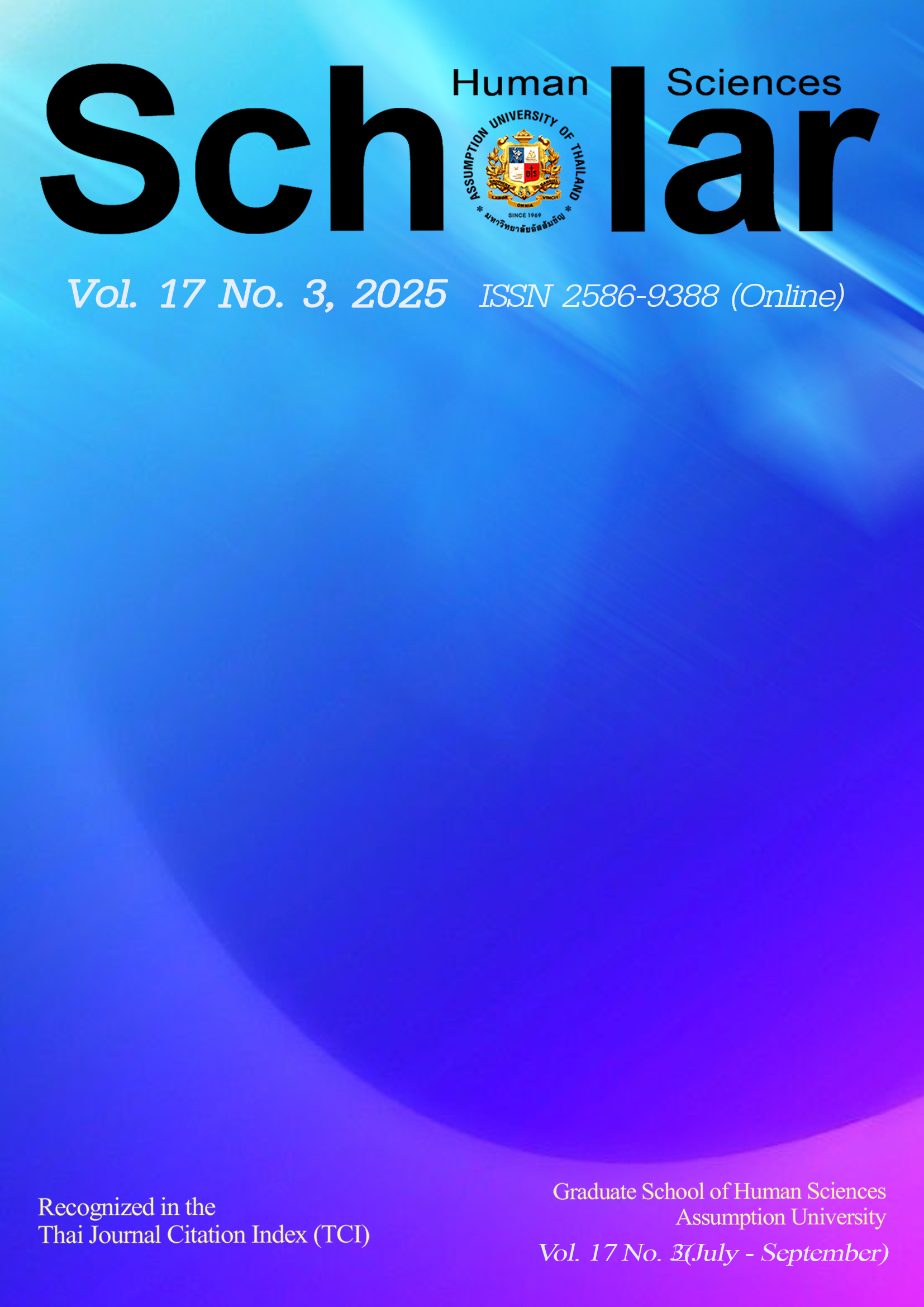A Qualitative Study in Using the Curriculum Cycle Model and Genre Theory to Improve Students’ Business Negotiation Writing Performance in Chinese University Contexts
DOI:
https://doi.org/10.14456/shserj.2025.68Keywords:
Business English, Negotiation Writing, Curriculum Cycle Model, Language Teaching, Academic WritingAbstract
Purpose: This study investigates the effectiveness of integrating a curriculum cycle model and genre theory to enhance Chinese university students' proficiency in business English negotiation writing. Research Design, Data, and Methodology: The research employs a qualitative approach to explore the impact of the curriculum cycle model on students' writing abilities, perceptions, and preferences. After the experiment teaching for 8 weeks, twenty-eight undergraduate students majoring in English at Wuchang University of Technology, Wuhan, China participated in in-person interviews to gather qualitative data. Results: Findings from the interviews revealed that students held positive views regarding the curriculum cycle model, emphasizing its role in enhancing their negotiation writing skills. The study concludes that implementing such pedagogical approaches can significantly benefit students by equipping them with essential negotiation skills and fostering effective communication in business contexts. Conclusions: This research contributes to the field by demonstrating how innovative teaching methodologies can empower students to navigate and succeed in the complexities of professional communication.
References
Badger, R., & White, G. (2000). A process genre approach to teaching writing. ELT Journal, 54(2), 153-160.
Bazerman, C. (1994). Systems of genre and the enactment of social intentions. In A. Freedman & P. Medway (Eds.), Genre and the new rhetoric (pp. 79-101). Taylor & Francis.
Bhatia, V. K. (1993). Analysing genre: Language use in professional settings. Longman.
Derewianka, B., & Jones, P. (2016). Teaching language in context (2nd ed.). Oxford University Press.
Dudley-Evans, T., & John, M. J. (1998). Developments in ESP: A multi-disciplinary approach. Cambridge University Press.
Eschholz, P. A. (1980). How current-traditional rhetoric defends itself: A defense. College Composition and Communication, 31(4), 444-455.
Graves, D. H. (1983). Writing: Teachers and children at work. Heinemann Educational Books.
Hasan, R., & Williams, G. (1996). Literacy in society. Longman.
Horowitz, D. (1986). Process, not product: Less than meets the eye. TESOL Quarterly, 20(1), 141-144.
Hutchinson, T., & Waters, A. (1987). English for Specific Purposes: A learner-centered approach. Cambridge University Press.
Huţiu, O. (2017). Teaching negotiation in a globalised world: benefits of a genre approach. Training, Language and Culture, 1(3), 39-55.
Krashen, S. D. (1984). Writing: Research, theory, and applications. Pergamon Press.
Martin, J. R. (1984). Language, register and genre. In F. Christie (Ed.), Children writing: Reader (pp. 21-29). Deakin University Press.
Miller, C. R. (1984). Genre as social action. Quarterly Journal of Speech, 70(2), 151-167.
Nunan, D. (2001). Second language acquisition and applied linguistics. Routledge.
Rose, D. (2014). Analysing pedagogic discourse: an approach from genre and register. Functional Linguist, 1, 11. https://doi.org/10.1186/s40554-014-0011-4
Silva, T. (1993). Toward an understanding of the distinct nature of L2 writing: The ESL research and its implications. TESOL Quarterly, 27(4), 657-677.
Swales, J. M. (1990). Genre analysis: English in academic and research settings. Cambridge University Press.
Downloads
Published
How to Cite
Issue
Section
License
Copyright (c) 2025 Yihan Xi

This work is licensed under a Creative Commons Attribution 4.0 International License.
The submitting author warrants that the submission is original and that she/he is the author of the submission together with the named co-authors; to the extend the submission incorporates text passages, figures, data, or other material from the work of others, the submitting author has obtained any necessary permission.
Articles in this journal are published under the Creative Commons Attribution License (CC-BY What does this mean?). This is to get more legal certainty about what readers can do with published articles, and thus a wider dissemination and archiving, which in turn makes publishing with this journal more valuable for you, the authors.




